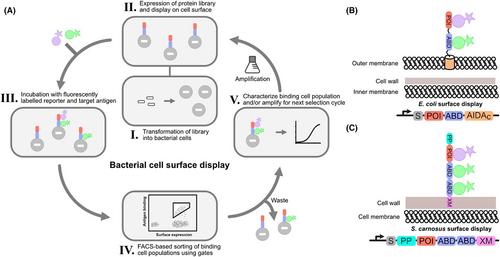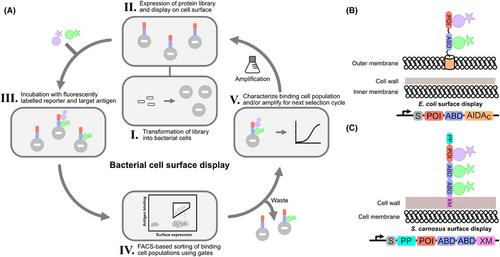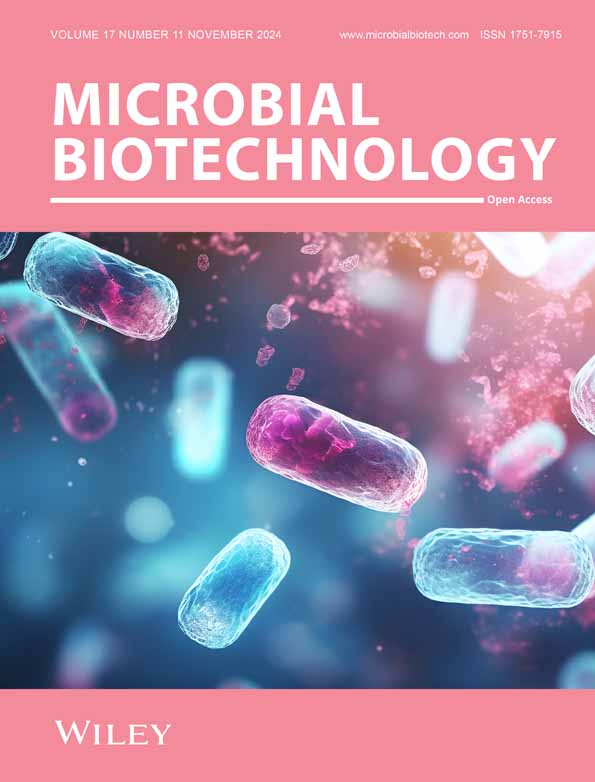药物开发中的表面工程细菌
IF 5.7
2区 生物学
引用次数: 0
摘要
细菌表面展示与荧光激活细胞分拣相结合,是一种多用途、稳健的系统,也是噬菌体展示法之外一种有趣的生成治疗亲和蛋白的替代方法。该系统可对细胞群进行实时监测和分选,为药物开发提供了独特的可能性。它已被用于开发几种亲和体分子,目前正在对其进行临床前评估,以治疗和诊断癌症和神经退行性疾病等。此外,它还可应用于药物设计的其他领域,如绘制表位图和进化酶特异性。本文章由计算机程序翻译,如有差异,请以英文原文为准。


Surface-engineered bacteria in drug development
Bacterial surface display in combination with fluorescence-activated cell sorting is a versatile and robust system and an interesting alternative approach to phage display for the generation of therapeutic affinity proteins. The system enables real-time monitoring and sorting of cell populations, which presents unique possibilities for drug development. It has been used to develop several affibody molecules currently being evaluated preclinically for the treatment and diagnosis of, for example, cancer and neurodegenerative diseases. Additionally, it can be implemented in other areas of drug design, such as for mapping epitopes and evolving enzyme specificities.
求助全文
通过发布文献求助,成功后即可免费获取论文全文。
去求助
来源期刊

Microbial Biotechnology
Immunology and Microbiology-Applied Microbiology and Biotechnology
CiteScore
11.20
自引率
3.50%
发文量
162
审稿时长
1 months
期刊介绍:
Microbial Biotechnology publishes papers of original research reporting significant advances in any aspect of microbial applications, including, but not limited to biotechnologies related to: Green chemistry; Primary metabolites; Food, beverages and supplements; Secondary metabolites and natural products; Pharmaceuticals; Diagnostics; Agriculture; Bioenergy; Biomining, including oil recovery and processing; Bioremediation; Biopolymers, biomaterials; Bionanotechnology; Biosurfactants and bioemulsifiers; Compatible solutes and bioprotectants; Biosensors, monitoring systems, quantitative microbial risk assessment; Technology development; Protein engineering; Functional genomics; Metabolic engineering; Metabolic design; Systems analysis, modelling; Process engineering; Biologically-based analytical methods; Microbially-based strategies in public health; Microbially-based strategies to influence global processes
 求助内容:
求助内容: 应助结果提醒方式:
应助结果提醒方式:


